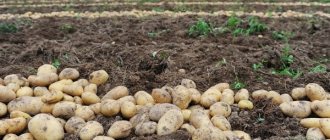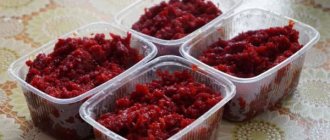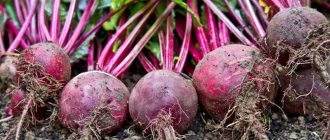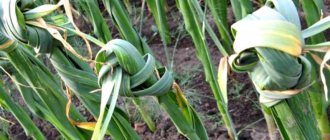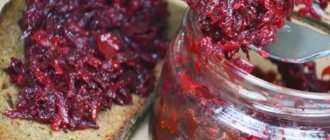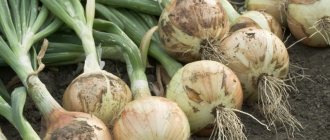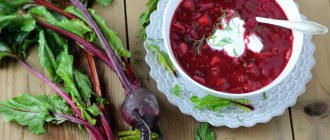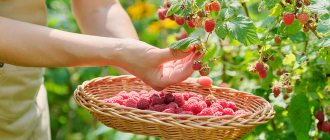In order to use table beets for preparing various dishes in winter, it is necessary to properly prepare them for long-term storage. Today we will talk about how to trim beets for winter storage, clean the root crops from dirt, dry and process them.
Selecting root vegetables for preservation for the winter 2. Cleaning and drying beets 2.1 How to dry root vegetables 3. How to trim and process beets before storage 3.1 Additional processing of root vegetables
Photo pixabay/nagygyongyi: we tell you how to prepare beets for storage for the winter.
Basic Rules
For storage, it is advisable to choose winter beet varieties (Bordeaux -237, Bravo, Ideal, Madame Rouzette, Salatnaya, Cold-resistant 19 and others). The ripeness of beets is determined by yellowed tops.
Harvesting should be done before the first frost in dry, cool weather . Typically, root crops are dug up in the first half of October.
Root vegetables are carefully dug up with a pitchfork or shovel, trying not to damage the tubers.
Immediately after harvesting, the beets are laid out to dry. You can do this directly in the garden bed or under a canopy.
If you’re lucky and the autumn sun warms the vegetables with its rays for 2-3 hours, then you can’t imagine anything better. If the weather is rainy, you can dry the beets in a well-ventilated area for 3-4 days. Read on to learn whether you need to wash beets before storing and how to trim beets for winter storage.
for how to trim beets for storage.
How to select the right beets for storage
After digging up the beet root crops, it is necessary to sort them as carefully as possible, because the duration of their storage will depend on which specimens you leave for the winter.
After harvesting from the beds and before storing root crops in the cellar, you should definitely evaluate their appearance and general condition. Only whole fruits can be stored well, without damage, signs of rotting or the presence of diseases. For these purposes, choose the most even, medium-sized beets with dense, thick skin.
| On a note. Vegetables that do not pass the selection should not be thrown away. They can be processed, for example, preserved. In addition, damaged beets can be preserved in other ways: rolled into jars or frozen, after cutting them into portions. |
Photo pixabay/villemononen: beet harvest ready for harvest.
How to sort?
Before long-term storage, it is necessary to carefully inspect the fruits. They should not have dents, rot, or cuts. Very large root vegetables are also not suitable because they do not tolerate long-term storage. You should give preference to vegetables 10-12 cm in diameter.
It is also worth sorting small fruits from medium ones, with this distribution the vegetables will be stored longer.
We select only healthy, undamaged, medium-sized fruits for storage.
When can you trim the tops of beets in the garden?
The foliage of beetroot is a full-fledged vegetative organ. These are like the arms and legs of a person. Removing it does not stimulate growth, as some people incorrectly believe. Nutrients accumulate in greens, which are then transferred to the root crop. The size of the beet tubers also depends on the size and quality of the tops.
So why do some summer residents actively practice this technique while the vegetable has not yet left the garden?
The main reason is that beetroot has tasty and nutritious leaves that are liked not only by people, but also by livestock.
Especially for lovers of vitamin salads, agronomists have developed a leafy variety of the crop - chard. It easily tolerates regular pruning and grows until late autumn. For example, I harvest until the first serious frost, since chard is not afraid of the cold.
Swiss chard is sown in late April - early May. If you haven’t had time to do this, it is permissible to pick the tops of ordinary beetroot.
They begin to do this in July so as not to excessively weaken the plants in the initial growth phase. Greens are collected evenly, no more than 1-2 leaves from one plant and no more than once every 2-3 weeks. After mass collection, it is advisable to feed with fermented grass or any weak solution of nitrogen fertilizer.
Can root vegetables be washed before storing?
Beets do not need to be washed at all before storage.
Moreover, you can’t even get it wet. After all, the thin layer of earth that remains on the skin of the root vegetable contributes to long-term storage.
You just need to carefully clean large lumps of earth with your hands so that they do not damage neighboring root crops during storage.
It is completely unacceptable to cut off pieces of dirt with a knife, or beat the roots against each other. Such actions can damage the skin of vegetables and storage will be unsuccessful.
on how to trim carrots and beets for winter storage. How to trim the tops of beets for storage and how to properly trim and store beets further.
How to properly store beets in a cellar, basement or underground in winter
There are several ways to store beets in the underground of a wooden house. Each of them helps to provide the crop with optimal conditions.
Storing beets in sawdust in winter
The classic method of winter storage is to sprinkle vegetables with dry sawdust. They will prevent fruit rotting and at the same time prevent excess moisture evaporation.
The harvest should be stored according to the following scheme:
- A layer of sawdust about 5 cm thick is poured into a clean wooden box.
- Fruits are placed on top, making sure that they do not touch each other.
- Add another layer of sawdust.
- Continue alternating material with vegetables until the box is full.
Before storing the crop, you must make sure that the sawdust is completely dry. Wet material cannot be used.
For long-term storage of beet fruits, it is recommended to take sawdust and shavings of coniferous trees
How to store beets in paper bags
If sawdust is not on hand, it is better to store beets in the cellar in large paper bags. They are used like this:
- The thoroughly dried harvest is placed in a container.
- Approximately 1/3 of the total volume on top is left empty.
- Place the open bag in a dark corner of the basement.
The paper absorbs excess moisture well and therefore prevents vegetables from rotting in winter. But the shelf life is still reduced to an average of 2-3 months.
It is convenient to store a small beet harvest in winter in paper bags
Winter storage in sand
A video on how to store beets in a cellar in winter recommends using sand, first of all. This material is easy to obtain in the required quantity; it absorbs moisture well, but does not allow vegetables to dry out.
The harvest should be stored as follows:
- A layer of dry or slightly moistened sand is poured into the bottom of a spacious wooden box.
- Place the beets on top, leaving a small distance between the individual root vegetables.
- Add sand again so that it completely covers the vegetables.
- Alternate layers until the box is completely filled.
Containers can be used not only wooden, but also plastic. Boxes can be stacked on top of each other in the cellar, but care must be taken to ensure normal air access.
If all rules are followed, beet fruits can be stored in a cellar in sand for up to a year or more.
Storing beets in winter in plastic bags
If certain conditions are met, you can store the crop in winter in plastic bags. Beetroot fruits are placed in bags like this:
- Frequent small holes are made in advance in the polyethylene for air access.
- Pour some dry sawdust into the bag.
- Place the beet fruits, being careful not to pack them into the bag too tightly.
- The open package is placed in the cellar in a well-ventilated dark place.
Under good conditions, the harvest in a plastic bag can last until spring. But from time to time you will need to sort out the root crops and throw away the rotting specimens.
Attention! Beets should not be stored in winter in a tightly tied bag. Condensation will form inside the bag and the crop will quickly rot.
If a large amount of moisture appears in the bag, the beet fruits need to be removed, dried and transferred to another bag.
How to treat before storage?
If the beets were collected correctly , carefully selected and stored correctly, then processing is not necessary. If stored properly, root vegetables can be stored for up to 8 months.
But some gardeners still prefer to process vegetables. Here are several ways to process beets before storage :
- treatment of root crops with sifted wood ash;
- reliably protects beets from infections and chalk powder. Before storage, the fruits are carefully rolled in it;
- " salt method" Root vegetables are treated with saline solution (250 grams of salt per bucket of water), then thoroughly dried and sent for winter storage;
- processing beets with a clay mash. To do this, the clay is diluted with water to the state of liquid sour cream. After this treatment, the fruits are also thoroughly dried.
Preparing the cellar for storing beets
Preparing vegetables for storage should include such an important stage as processing the cellar or basement. These areas must be well cleaned and ventilated. All surfaces should be free of the slightest signs of mold.
Beetroot can be stored in different ways. Most often, the harvested crop is stored in cellars or basements, which create the most optimal conditions for vegetables. The choice of method depends on the capabilities of the summer resident. In any case, it is necessary to maintain the correct temperature and humidity conditions. So the following conditions are ideal for these root crops:
Temperature
From -1 to +2 degrees. Particular care should be taken to maintain the required temperature regime at the very beginning of storing beets, since an increase in temperature can provoke the sprouting of vegetable tops, which will significantly reduce their shelf life. In the future, temperatures up to +4 degrees can be considered acceptable. Higher temperatures in the basement or underground will lead to the rapid development of diseases, rotting and wilting of root crops.
Humidity
85-90%. With higher humidity in the basement, fungal infections quickly develop, which can damage the entire crop. As humidity levels drop, vegetables begin to wilt and shrivel. As a result, beets lose all their taste and nutritional qualities.
Natural ventilation
Any room intended for storing vegetables must have good air circulation.
When to do it
Since pruning of leaves is carried out as needed, this can be done at any time . Especially when it comes to pests or diseases. If we talk about thinning out seedlings, then if the plant has been carefully removed from the ground, it can be planted on an additionally prepared bed.
In cases where leaves are needed for food, pruning of plants is carried out evenly so as not to harm the root crop. Swiss chard is pruned regularly as the tops grow.
Permitted and prohibited periods
You should not pick off the leaves when the plant is young and just gaining growth, from about May to June. In subsequent periods, it is possible to use the leaves for cooking. Beet tops are often used to feed animals.
This is possible if the tops are powerful enough and there is a lot of them. The safest period will be considered the time when the root crop has already gained most of its mass and has reached a size of up to five centimeters.
Reference. Earlier removal of foliage can negatively affect root growth.
Is it possible to trim leaves while they are growing?
If there is an urgent need to cut off the tops of beets, then this is possible during the growth period. But it is necessary to properly remove the leaf part in order to cause as little harm as possible to the plants.
Tips and recommendations from experienced summer residents
Growing beets is a simple matter, but it also has its own characteristics.
There is no need to feed beets with nitrogen fertilizers; in this case, nitrates will accumulate in the root crop. In this case, the fruits will grow small, and the tops, on the contrary, will grow large. An excess of nitrogen can be seen on the cut of the fruit in the form of white circles, and can also be determined by the red color of the foliage. It is better not to use such beets for food.
As was said, beets do not like acidic soils, so you cannot fertilize them with manure. The exception is when there is slow leaf growth or small foliage. In this case, it is worth fertilizing once with an infusion of weeds or manure.
It is important to select plant varieties according to the growing region:
- Suitable varieties for the Moscow region: Red Ball, Vodan F1, Eclipse, Ataman.
- Varieties for the Urals: Bikores, Valenta, Bon-Bon F1.
- For Siberia: Sibirskaya Ploskaya, Podzimnyaya, Red Ice, Red Bogatyr, Mashenka.
When to trim the tops of beets in the garden
Beet leaves are removed under the following circumstances:
- Attack of pests and diseases . In this case, only the most affected specimens are removed. Then they resort to continuous treatment with special preparations.
- Aging of tops . At the end of the growing season, yellow withered leaves are periodically removed from the plants.
- Mechanical damage . Get rid of all heavily torn sheets - usually they appear after a hurricane, hail, or squally wind.
- Overfeeding with nitrogen . This provokes the so-called “fatification”, that is, the uncontrolled growth of the above-ground part to the detriment of the fruit. After selective removal of tops, it is also a good idea to water the bed with clean water to wash out the remaining nitrogen fertilizer from the soil.
On a note. Symptoms of excess nitrogen in the soil include rapid growth of leaves and their redness. And if you cut the tuber, white rings will become noticeable in the pulp.
Do I need to pick off the leaves of beets?
Many novice amateur vegetable growers have heard that cutting off the leaves of vegetables will cause the root crop to grow larger. However, the size of the beets depends on many factors, least of all the amount of tops.
Other indicators are of primary importance: varietal characteristics, soil quality, fertilization, timely watering, degree of illumination, etc.
Points for and against
Do not forget that the root crop receives nutrients not only from the soil, but also through the leaves, so excessive pruning can deteriorate the quality of the fruit. With insufficient development of the leafy part, the root crop may lose its taste. This also leads to unnecessary injury to the plant, and stress is known to negatively affect growth.
Reference . The chard beet variety is grown to use its leaves as food.
Since the leafy part of ordinary root beets is important for the growth of the fruit, you should carefully consider planting the plant and take into account factors favorable to it, which will help you grow a tasty and healthy vegetable.
A few basic rules:
- There is no need to plant seedlings too densely; a distance of 10-15 cm is quite optimal.
- It is better to plant plants along the edge of other beds, for example, with cabbage, cucumbers, onions or tomatoes. You should not plant it after carrots or next to legumes.
- Pay attention to the soil for planting beets in the fall; it should not be acidic, otherwise the root crops will be tasteless and tough. Sandy loam and light loamy soils are most suitable. If the soil is too heavy, dilute it with river sand.
- A prerequisite is warmth. If the seedlings are exposed to frost or simply cool temperatures, the plant will go into flowering and there will be no harvest.
- When transplanting plants into the ground, there is no need to shorten the root of the root crop, because it grows to a sufficient depth to provide the young plant with moisture for the first time.
- Beets need to be provided with uniform watering, without stagnant water.
- It is enough to feed the plant with compost and be sure to mulch.
- It is useful to water plants with ash or boric acid diluted in water.
